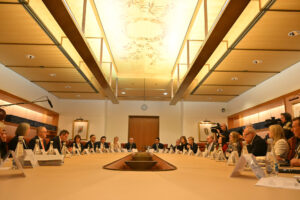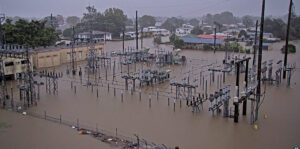The latest data from the Bureau of Statistics on families shows that more than ever before couples with dependants are both working.
Labour market policy director, Greg Jericho, notes in his Guardian Australia column that over the past 40 years the make-up of families has shifted dramatically from ones with just one parent working to now more than 70% having both partners in employment.
While this has mostly come from the great gains made by women since the 1970s that have seen changes to discrimination laws, child care and also societal norms to allow women to participate in paid work even once they have had children, it also highlights the rising cost of living pressures faced by most families.
The times when a family on one income could be expected to buy a house are long gone. But the decade of weak wage growth and recent falls in real wages make living on one wage even more difficult.
But the data reveals that men are still more likely to be the sole breadwinner and it confirms the labour force data that shows women remain much less likely than men to work full-time. This is a major reason why women in over 90% of occupations earn on average less than do men. It means that women remain at a heightened risk of income loss in the event of relationship breakdowns that can severely affect their standard of living, especially in retirement.
The data also reveals that women remain very much the most likely parent in sole-parent families. Given the laws that now see such parents move from the parenting allowance to the lower-paying Jobseeker once their youngest child turns 8, this highlights the precarious nature over 800,000 women face as they attempt to survive as the sole parent.

You might also like
Feeling hopeless? You’re not alone. The untold story behind Australia’s plummeting standard of living
A new report on Australia’s standard of living has found that low real wages, underfunded public services and skyrocketing prices have left many families experiencing hardship and hopelessness.
Want to lift workers’ productivity? Let’s start with their bosses
Business representatives sit down today with government and others to talk about productivity. Who, according to those business representatives, will need to change the way they do things?
Climate crisis escalates cost-of-living pressures
A new report has found direct connections between the climate crisis and rising cost-of-living pressures. Failure to lower emissions now will only aggravate the crisis, with each moment of inaction compounding the pressure on households.


